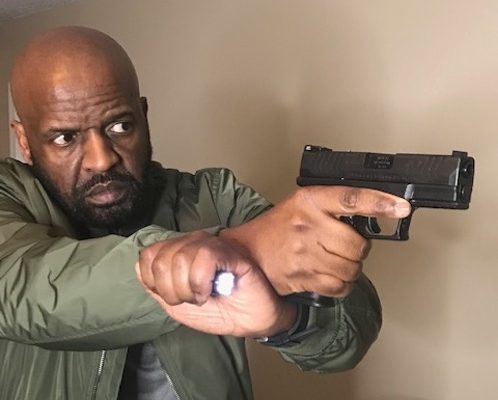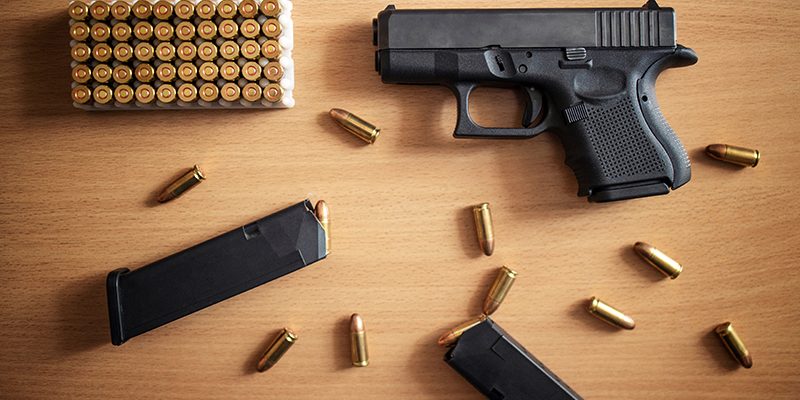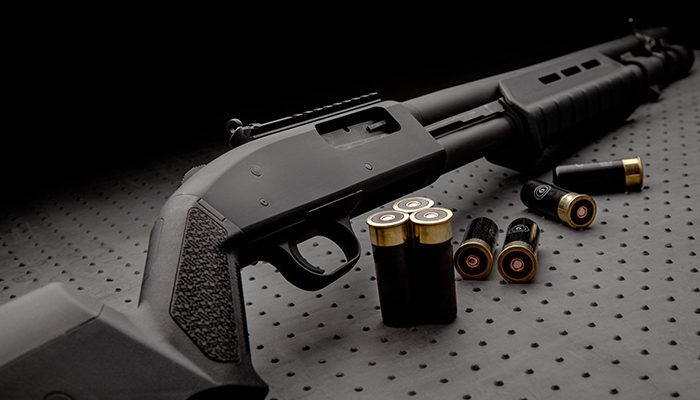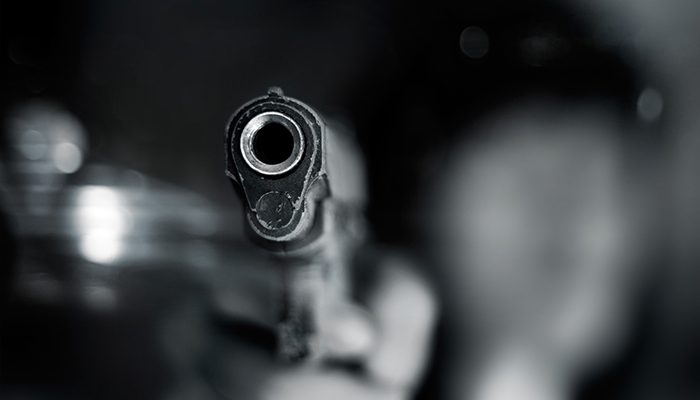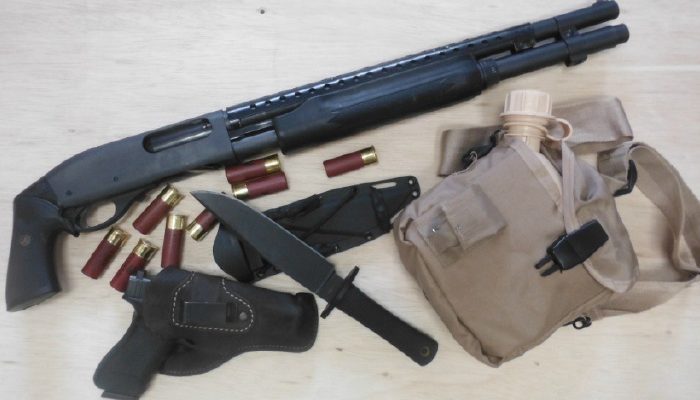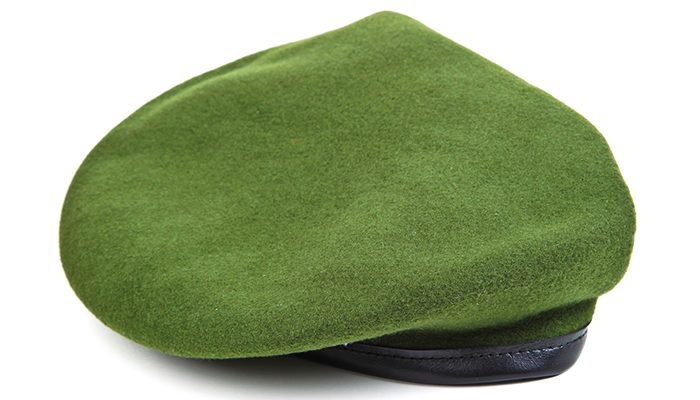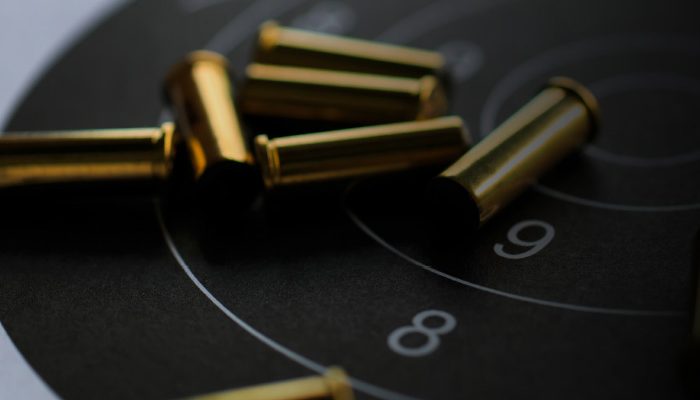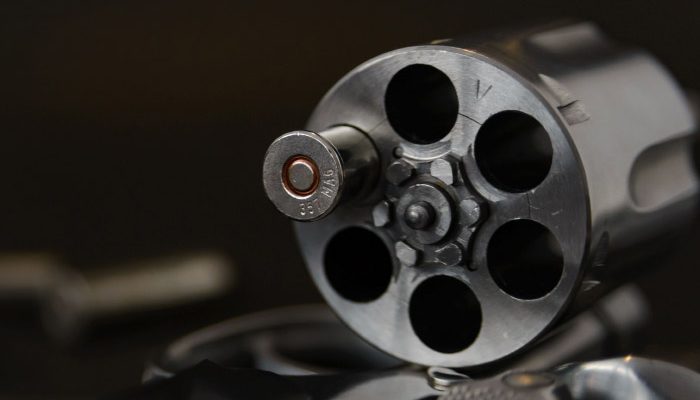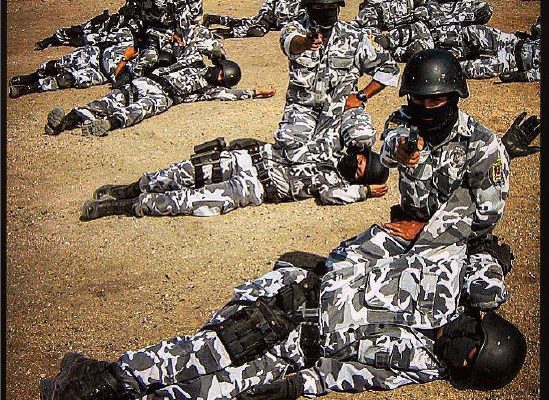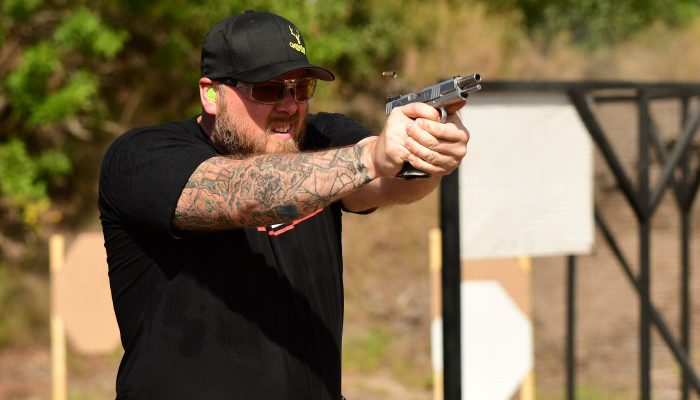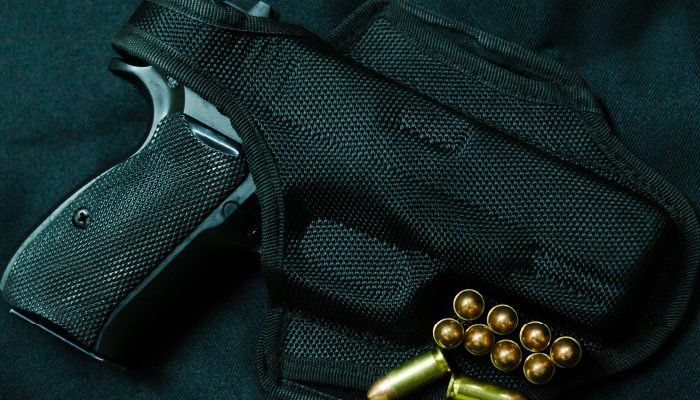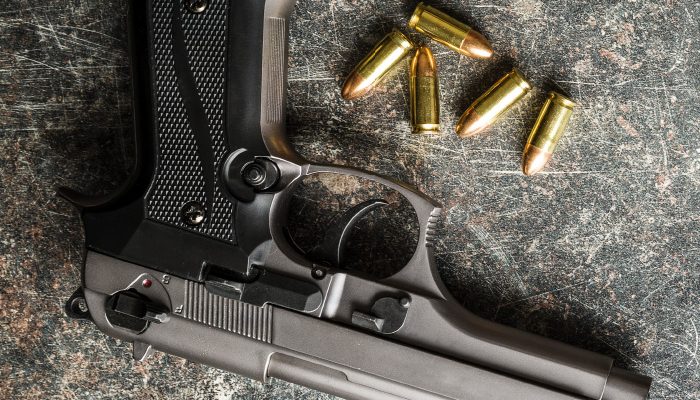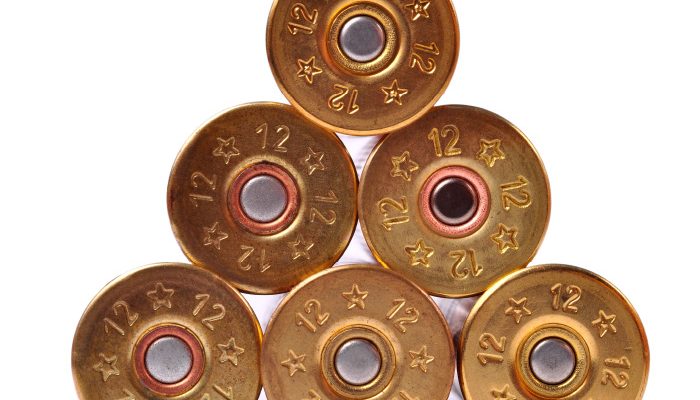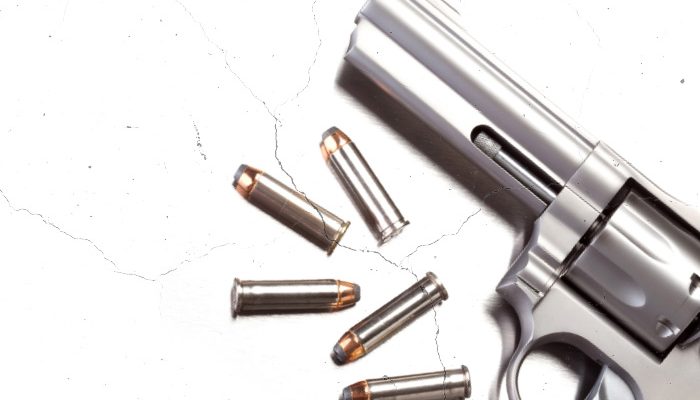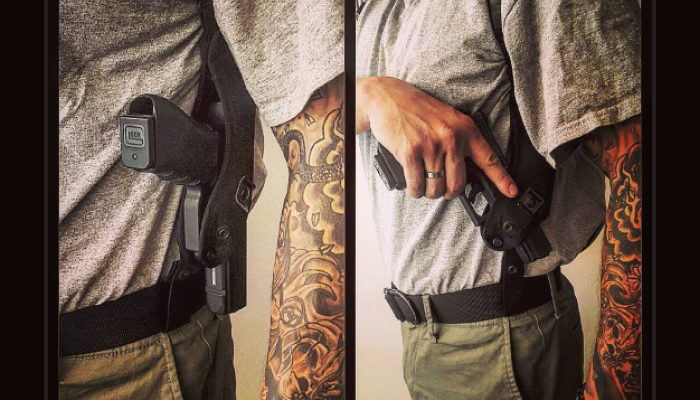Often when one sense is taken away, the other senses become heightened. Allow those senses to work for you as you plan your search or exit. For instance, use your sense of smell to help detect a potential threat or adversary (body odor, cologne or perfume, smoke cigarette or tobacco) or any smells uncommon to your environment. Allow your movements to be slow and methodical unless executing a rapid/dynamic entry or exit maneuver. Be conscious of noise to help you locate a threat or potential adversary.
Pistol Shooting
It amazes how many people attend supposed tactical firearms training classes and come away having never been shown or understand the importance of shooting one handed.
Yes, shooting a pistol with a two-handed grip is for most people more accurate and is better for competition shooting or passing range qualifications. But, in the real-world when your reactions need to be quick and you need to respond to attacks in all environments you may not have the space or time to get into your range perfect position.
The Shotgun
I would say the firearm I have encountered the most in the security business internationally is the shotgun. I would say the firearm I have encountered the most in the security business internationally is the shotgun. I have heard many supposed experts within the close protection industry dismiss shotguns as be “cowboy” and “overkill” and […]
Tactical Pistol Training: Cross draw!
The most favored method is to carry the handgun on the same side as the dominant/strong hand (strong side). It is believed that this is the safest method of carry, because when the handgun is drawn from the holster, it points in a straight line directly at the target. The Cross draw is where the gun is on the opposite side of the body to the dominant hand, so you have to reach across the body to draw the handgun.
Tactical Firearms: Pistol Grip Shotguns
These days a lot of people’s opinions seem to be 3rd hand or YouTube based which can be concerning… For me pistol grip shotguns are very effective and versatile weapons if used properly. Shotguns with stocks are easier to use and are more controllable with hotter magnum loads but lack the maneuverability of a pistol grip shotgun.
Gap Training, What Most Practitioners Overlook
With 30 years of experience as a sailor, soldier, police officer/EMT, and security provider and trainer I have come up with some pretty clear ideas about what medical first response is for the average security provider. This is not meant to deter anyone from obtaining their EMT or Paramedic certifications or from persons with higher levels of training from providing that service.
Black Man Green Beret
Black Man Green Beret is an American story, a semi-autobiography of a man born in the ghettos of the South Bronx and raised on the mean streets of Harlem, in New York City.
BASIC RANGE CONSIDERATIONS
My professional experience with firearms started when I was 17 years old, and I joined an Infantry Regiment in the British Army. After leaving the British Army five years later, I worked in an armed capacity in numerous countries while providing security services.
Tactical Reloading & Stoppage Drills
At some point you will have to reload your handgun and clear stoppages and misfires. If you are on a nice comfortable range doing some target practice, this is not a problem. But if you are involved in a serious hostile situation, your reload and stoppage drills need to be slick and well-rehearsed.
Tactical Firearms: The Basics
What most people don’t realize is that most civilian, non-government close protection jobs are unarmed due to the legal restrictions on firearms in most countries. Part of your threat assessment for any assignment needs to take into account laws on the use of force and weapons in the locations you are going to be working in. Being caught with an illegal weapon, especially a firearm, will get you thrown in jail very quickly, no matter how important you think you are!
Ammunition – Why the JHP? Part 2
Bullets are bullets and ammunition is just ammunition, right? The reality is, that statement couldn’t be further from the truth. As outlined in my last article, bullets (or projectiles) come in many different forms and these forms have their intended purpose. In this installment, I want to dive deeper into the application of the Jacketed Hollow Point (JHP). The reason this projectile is going to get its own article is due to the importance of it and how it applies to self-defense and in the industry of close protection.
Tactical Firearms – Methods of Carry!
If you are carrying a handgun for defensive purposes, you need to be able to get to it when you need it.
On the market today, there is a wide variety of holsters to choose from that vary in price from a few bucks to a few hundred; some are worth it, many are not. What most people forget when considering carry techniques for a handgun or any weapons for that matter is that they are going to have to be able to access the weapon in all environments with both strong and weak hands.
Ammunition – Does it Matter?
In the context of close protection work, the use of firearms is often an all or nothing proposition. In most cases, you are either armed, or you’re not! There is a whole host of things that play into that, be it where you are, your level of certification, or the demands the client puts on you. All of that aside, I wanted to take some time and dig into the finer things, often overlooked when we talk about “strapping up.” Ammunition!
Tactical Firearms – The Shotgun: Ammunition
With a 12ga shotgun, you can literally shoot clay pigeons, real pigeons, deer, bears, or pedophiles, and terrorists. You just need to choose the right type of shells.
The ammunition used in shotguns is referred to as shells, not bullets. Shotgun shells come in various sizes, but the most common for 12ga guns are 2 ¾ inches, 3 inches, and 3 ½ inches.
Tactical Firearms Revolvers
These days many shooters and those in the armed security business shy away from revolvers. I have heard quite a few people brush them off as being old-fashioned, obviously not tacticool enough to post on their social media. But in the real world of protection, there are a lot of revolvers in use for personal self-defense and security duties.
Tactical Firearms – Cross-Draw
It is believed that this is the safest method of carry because when the handgun is drawn from the holster, it points in a straight line directly at the target. The cross-draw is where the gun is on the opposite side of the body to the dominant hand, so you have to reach across the body to draw the handgun.
At the Point of Crisis
Many of you will have seen the photo of the Dallas shooter outside of the Federal Building. Now ask yourself if this was your Office, School, or House of Worship how prepared would your company or institution be to recognize the signs of trouble as those Federal Officers did and deny access and ultimately defeat the shooter?
Evacuating and Moving Through Buildings Tactically
If you find yourself in a scenario where you need to evacuate a building with a real threat or danger posed to your safety, then you need to do so tactically. We are not interested in conventional SWAT tactics as it is not our job to apprehend, or even nullify, the threat; your job is to look after yourself, your family, or your client. follow these basic, lifesaving, procedures.
Training for Tactical Shooting
Handguns are meant for close-quarter shooting. Think about it; if someone is going to attack, kidnap or rob you on the street, they are going to be close, within conversational range. Now, look around your home or business and see what the maximum distance is that you would have a clear shot at a criminal or terrorist, for most this will be less than 10 yards/meters. This places emphasis on close quarter instinctive shooting over precision target shooting. As part of your training practice for long distance shoots (for handguns, this means over 25 yards), you should try hitting targets out to and over 100 yards. This will improve your handgun skills and show you your capabilities and limitations, but the emphasis should be on close quarter instinctive shooting.
Tactical Vs Tacticool
The ‘tactical culture’ had flourished over the last few years, mainly due to the proliferation of video cameras and increasing engagement with social media platforms, which I believe is causing the lines between reality and the ‘tacticool’ entertainment world to become very, very blurred…
It takes very little these days to be a part of the tactical sub-culture that is trending, here’s how to do it. Simply, purchase a gun, where legal, get your hands on some tactical clothing, buy a bunch of ‘black op’ accessories, plug into ‘Soldier of Fortune’ social-media channels and perhaps even take some no-fail tactical training courses, then after a few months, hey presto, you’re an expert! Whereas, in the good old days, the only option, if you wanted this lifestyle, was to join the military – preferably the Infantry!
